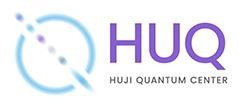
"Schrödinger’s Rainbow: The Renaissance in Quantum Optical Interferometry"
Monday, June 15th 2015, The Hebrew University, Levin Hall no.8 12:00 o'clock
Over the past 20 years bright sources of entangled photons have lead to a renaissance in quantum optical interferometry. These photon sources have been used to test the foundations of quantum mechanics and implement some of the spooky ideas associated with quantum entanglement such as quantum teleportation, quantum cryptography, quantum lithography, quantum computing logic gates, and sub-shot-noise optical interferometers. I will discuss some of these advances and the unification of optical quantum imaging, metrology, and information processing.
"Linear Optical Quantum Metrology with Single Photons: Exploiting Spontaneously Generated Entanglement to Beat the Shot-Noise Limit"
Wednesday, June 17th 2015, The Hebrew University, Danziger B seminar room 14:00 o'clock
Quantum number-path entanglement is a resource for super-sensitive quantum metrology and in particular provides for sub-shot noise or even Heisenberg-limited sensitivity. However, such number-path entanglement has thought to have been resource intensive to create in the first place --- typically requiring either very strong nonlinearities, or nondeterministic preparation schemes with feed-forward, which are difficult to implement. Very recently, arising from the study of quantum random walks with multi-photon walkers, as well as the study of the computational complexity of passive linear optical interferometers fed with single-photon inputs, it has been shown that such passive linear optical devices generate a super-exponentially large amount of number-path entanglement. A logical question to ask is whether this entanglement may be exploited for quantum metrology. We answer that question here in the affirmative by showing that a simple, passive, linear-optical interferometer --- fed with only uncorrelated, single-photon inputs, coupled with simple, single-mode, disjoint photo-detection --- is capable of significantly beating the shot-noise limit. Our result implies a pathway forward to practical quantum metrology with readily available technology.
"Inefficiency of classically simulating linear optical quantum computing with Fock-state inputs"
Thursday, June 18th 2015, The Hebrew University, New Engineering Bld. building A, end of corridor on 3rd floor, 12:00 o'clock
Aaronson and Arkhipov recently used computational complexity theory to argue that classical computers very likely cannot efficiently simulate linear, multimode, quantum-optical interferometers with arbitrary Fock-state inputs [Aaronson and Arkhipov, Theory Comput. 9, 143 (2013)]. Here we present an elementary argument that utilizes only techniques from quantum optics. We explicitly construct the Hilbert space for such an interferometer and show that its dimension scales exponentially with all the physical resources We also show in a simple example just how the Schrödinger and Heisenberg pictures of quantum theory, while mathematically equivalent, are not in general computationally equivalent. We conclude our argument by comparing the symmetry requirements of multiparticle bosonic to fermionic interferometers and, using simple physical reasoning, connect the nonsimulatability of the bosonic device to the complexit of computing the permanent of a large matrix. Finally we discuss our recent work on time-binned Boson Sampling and Boson Sampling with nonclassical states of light other than Fock states, such as Schrödinger-cat states, photon-added or -subtracted squeezed states, and photon-added coherent states

